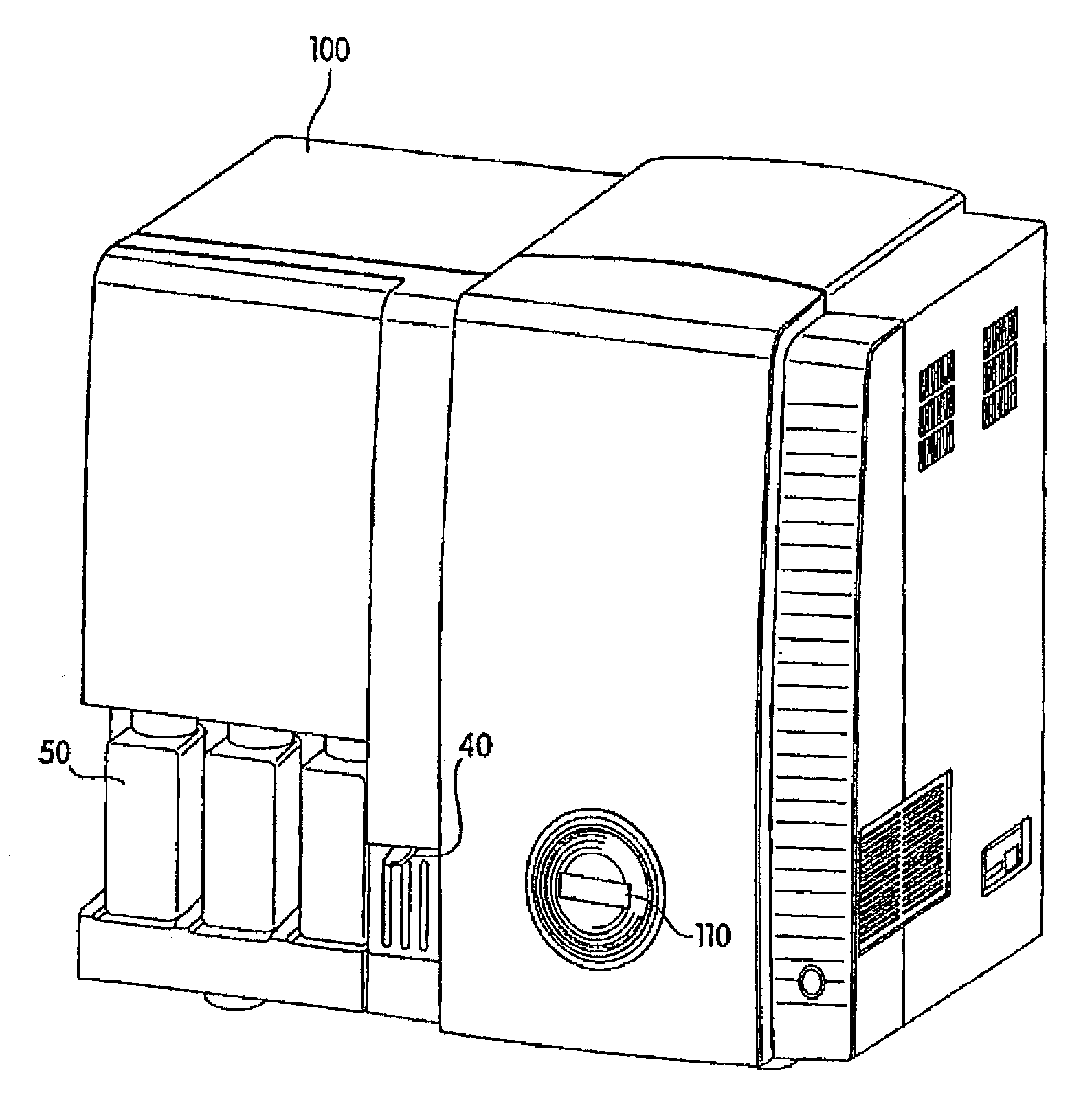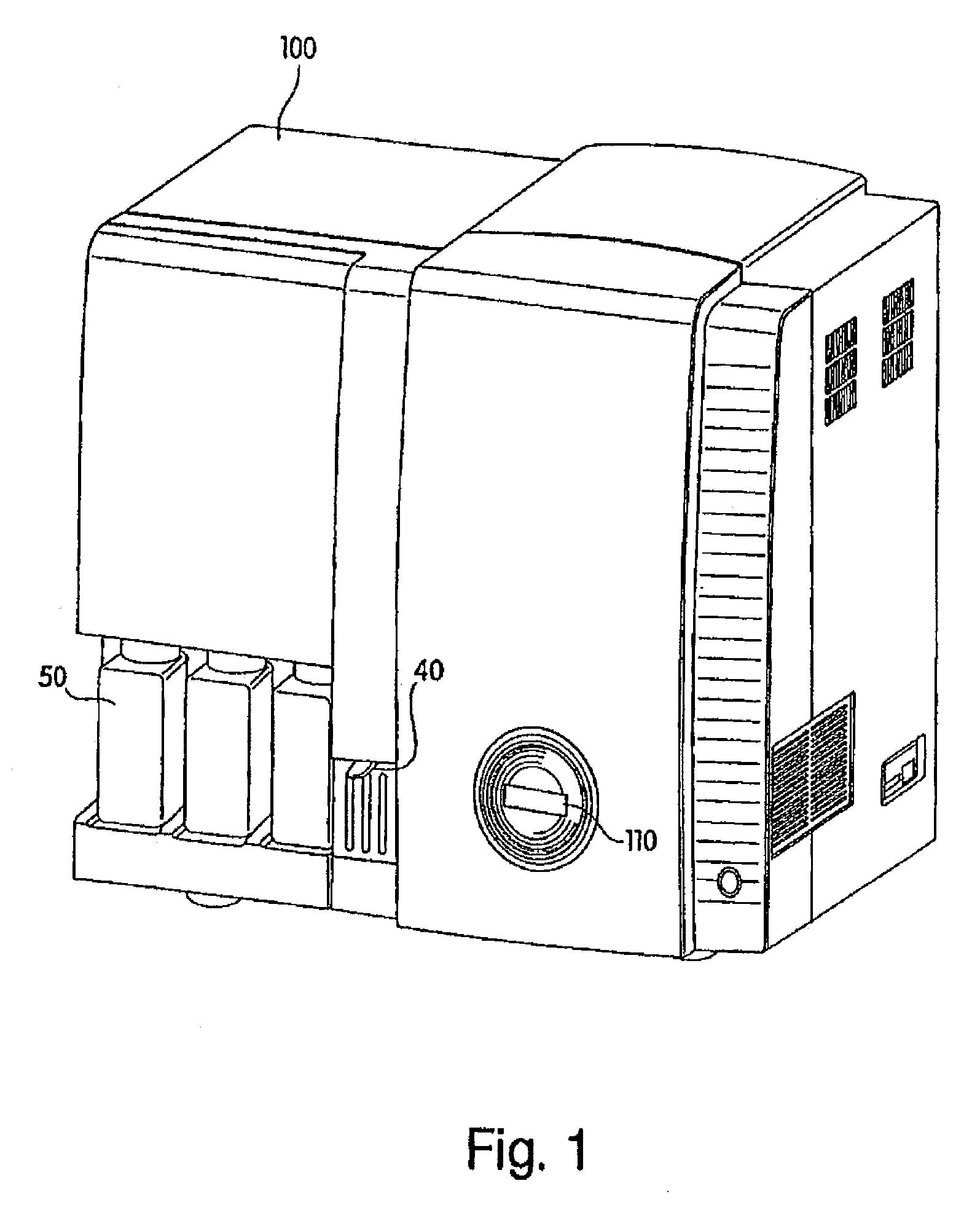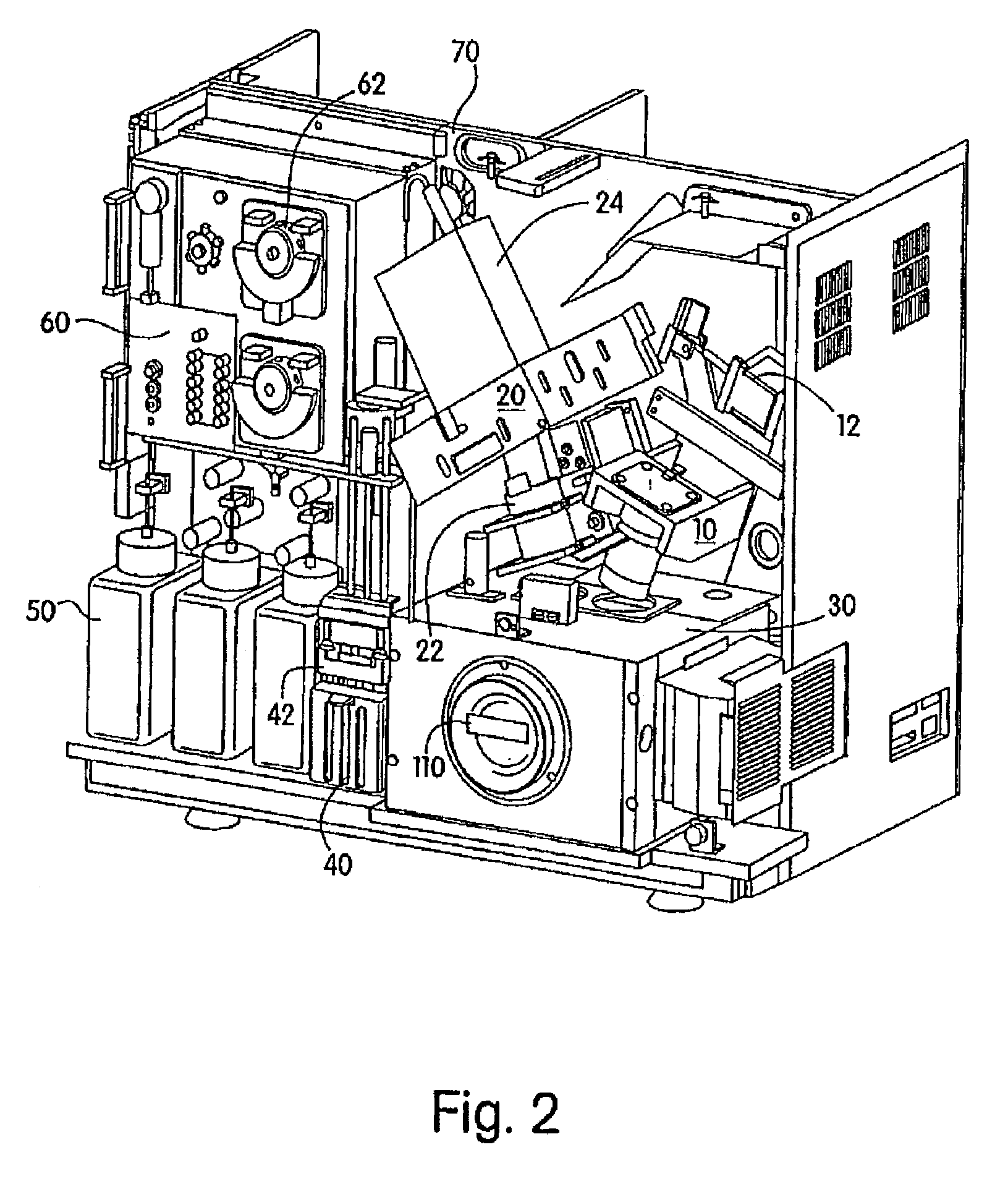Optical resonance analysis unit
a technology of optical resonance and optical resonance, applied in the direction of pumping plants, containers, using liquid separation agents, etc., can solve the problems of loss of contrast, “hot spots” or image flare, loss of contrast, etc., to prevent accurate measurement of binding reactions on affected roises, reduce buffer/sample interface mixing, and reduce the effect of flexibility
- Summary
- Abstract
- Description
- Claims
- Application Information
AI Technical Summary
Benefits of technology
Problems solved by technology
Method used
Image
Examples
Embodiment Construction
[0057]The present invention is directed to an improved optical resonance analysis instrument for use especially in surface plasmon resonance (SPR) capable of simultaneous measurement of an array of reaction sites. The array SPR instrument may be any type comprising a two dimensional reflective SPR sensor array and a detector assembly oriented to receive the reflected image of the SPR sensor array, such as an array type grating coupled SPR instrument, an array type prism coupled SPR instrument, or the like. In the following description a detailed embodiment of an array type grating coupled SPR instrument is presented, but it should be noted that essentially all features may be directly applicable on other types of array SPR instruments, as is briefly disclosed for an array type prism coupled SPR instrument with reference to FIG. 10. In particular, the present invention combines a number of features which, in addition to enabling real-time analysis of up to thousands of molecular bind...
PUM
| Property | Measurement | Unit |
|---|---|---|
| Angle | aaaaa | aaaaa |
| Temperature | aaaaa | aaaaa |
| Angle | aaaaa | aaaaa |
Abstract
Description
Claims
Application Information
 Login to View More
Login to View More - R&D
- Intellectual Property
- Life Sciences
- Materials
- Tech Scout
- Unparalleled Data Quality
- Higher Quality Content
- 60% Fewer Hallucinations
Browse by: Latest US Patents, China's latest patents, Technical Efficacy Thesaurus, Application Domain, Technology Topic, Popular Technical Reports.
© 2025 PatSnap. All rights reserved.Legal|Privacy policy|Modern Slavery Act Transparency Statement|Sitemap|About US| Contact US: help@patsnap.com



